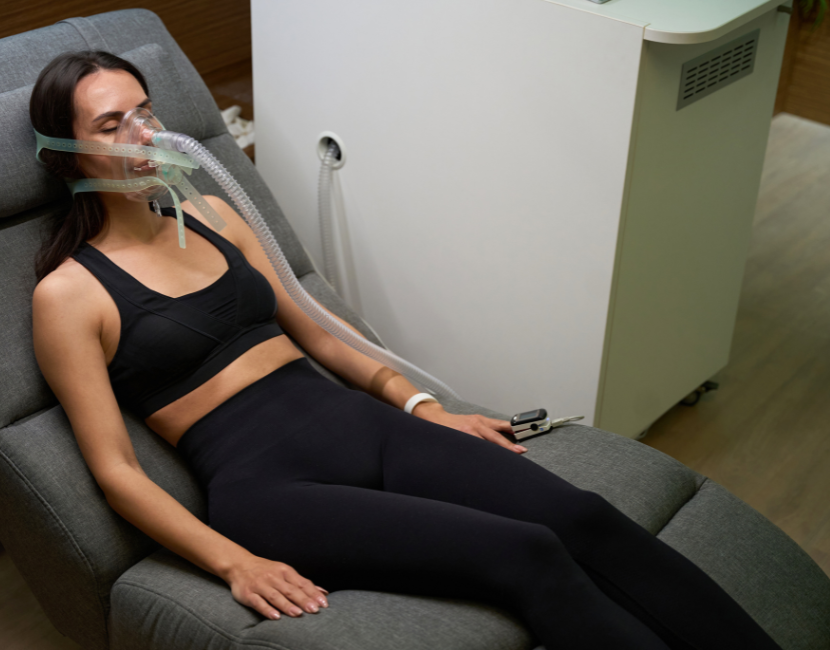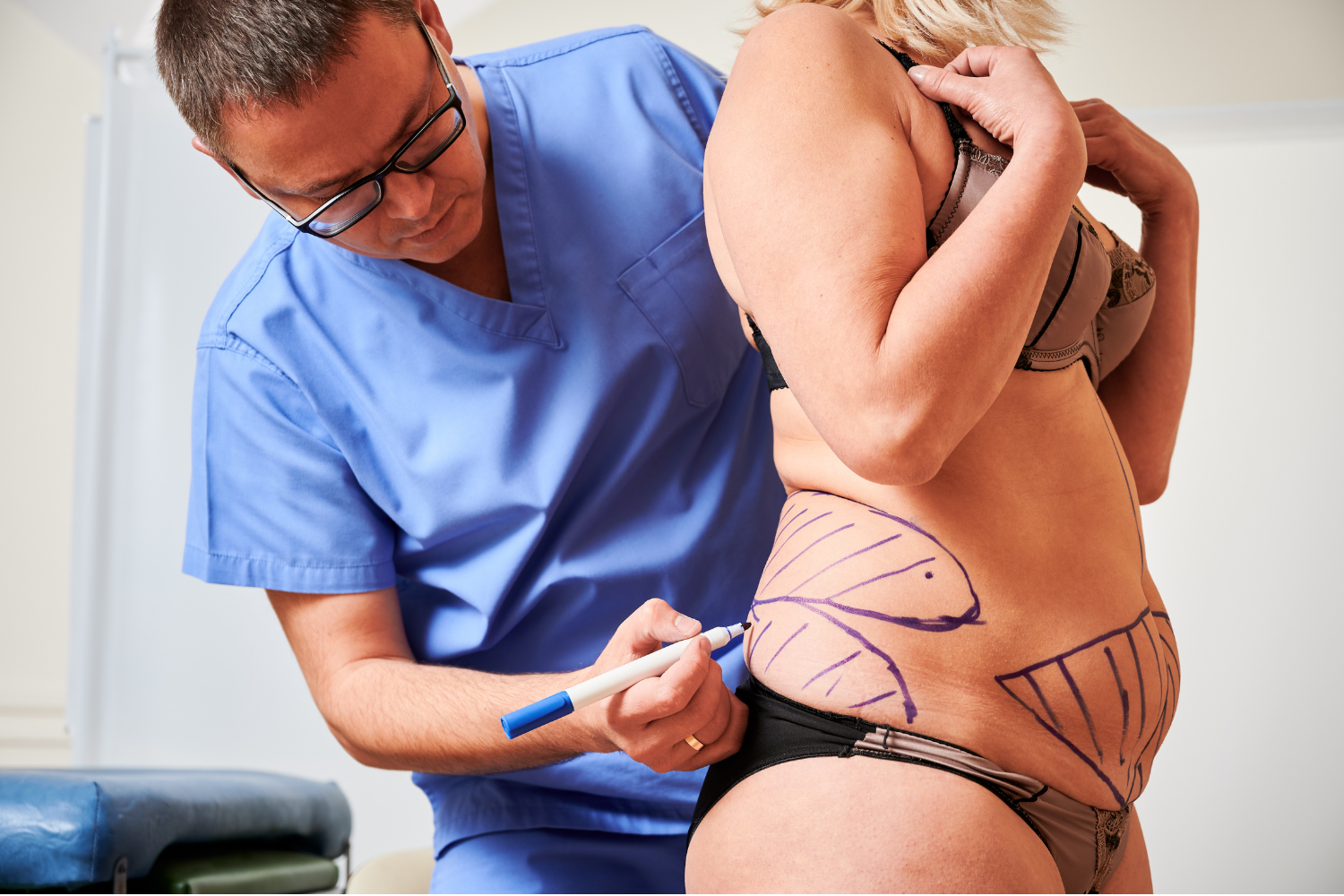Hyperbaric oxygen therapy: How does it help your recovery?
Hyperbaric oxygen therapy accelerates healing, reduces infections and improves recovery after plastic surgery. It favors grafts, flaps and aesthetic results. It is safe, personalized and medically supervised, ideal for optimizing the postoperative period.

Hyperbaric oxygen therapy (TOHB) is a technique that uses pure oxygen at high pressure to improve oxygenation in body tissues. In plastic surgery, this therapy is used to support recovery, especially in cases where healing may be slow or complicated. Its main benefit is to accelerate wound healing and reduce the risk of infections after surgery.
This therapy can help revitalize damaged tissues, improve the formation of new tissue, and improve the survival of grafts and flaps used in reconstructions. Although it is not used in all cases, its application in cosmetic and reconstructive surgery gains recognition for its positive effects documented in several clinical studies.
In addition to being a safe option, TOHB is adapted to different surgical procedures to promote a better outcome and minimize complications. This makes therapy a valuable tool for surgeons and patients seeking to optimize recovery and aesthetic outcomes.
Key points
- Improved oxygenation accelerates healing and reduces infections.
- It supports tissue survival in grafts and flaps.
- It is a safe technique applied in various plastic surgeries.
Hyperbaric Oxygen Therapy in Plastic Surgery
Hyperbaric oxygen therapy improves oxygen delivery to damaged tissues, accelerating healing and reducing infections. This treatment uses special chambers to deliver pure oxygen at pressures higher than atmospheric pressure, which promotes regenerative processes in plastic surgery.
What is Hyperbaric Oxygen Therapy?
Hyperbaric oxygen therapy (TOHB) consists of the patient breathing 100% pure oxygen inside a pressurized chamber, above 1.4 absolute atmospheres. This increases the amount of dissolved oxygen in the blood and tissues, making possible better cellular oxygenation.
This technique is used to treat difficult wounds, burns, and healing problems after plastic procedures. In addition, it helps reduce the risk of infections and improves the survival of surgical grafts and flaps.
The sessions usually last between 60 and 120 minutes and are repeated several times a week depending on the medical indication.
Principles of hyperbaric oxygen in the healing process
Hyperbaric oxygen works by increasing available oxygen in tissues with low perfusion or ischaemia. This stimulates new tissue formation and cell repair.
It also decreases inflammation by reducing inflammatory mediators and cellular infiltration. Its antioxidant function protects against cell damage caused by lack of oxygen.
In plastic surgery, it improves results by:
- Promote the healing of wounds and ulcers
- Improve vascularization in grafts and flaps
- Prevent infections by inhibiting anaerobic bacteria
In addition, treatment can accelerate the reduction of pigmented spots and improve aesthetic appearance.
Hyperbaric chamber: operation and safety
The hyperbaric chamber is a closed device capable of increasing internal pressure and delivering 100% oxygen. There are two main types: monoplace (for one patient) and multiplace (for several) cameras.
The patient is seated or lying down during the session. The controlled environment ensures that the necessary pressure is reached for oxygen to penetrate the tissues.
Precautions are taken to avoid side effects such as oxygen toxicity or barotrauma. Therefore, the treatment follows strict protocols and constant medical supervision.
The correct use of the hyperbaric chamber ensures that the patient receives benefits without significant risks.
Benefits of Surgical Recovery Therapy
Hyperbaric oxygen therapy improves several key aspects of recovery after plastic surgery. It acts directly on blood circulation, the inflammatory response and cell production, promoting faster and more efficient healing. In addition, it reduces common risks such as infections and visible scars.
Acceleration of the healing and tissue regeneration process
Hyperbaric oxygenation increases the amount of dissolved oxygen in blood and tissues, which is vital for cellular repair. This extra oxygen nourishes wounds and accelerates the formation of new blood vessels, allowing the tissue to receive more oxygen and nutrients.
This process reduces the time needed for skin and internal tissues to regenerate after surgery. By improving blood circulation, the therapy also helps to eliminate cellular waste products faster, contributing to a cleaner and faster recovery.
Reduction of inflammation, edema and risk of infections
After surgery, swelling and edema are common and can delay recovery. Hyperbaric therapy reduces these symptoms thanks to its anti-inflammatory effects and regulation of the immune system.
High pressure oxygen also has bacteriostatic and bactericidal properties. This means that it helps prevent and control infections in the operated area, a crucial factor in avoiding complications in the surgical wound and reducing hospitalization time.
Improved collagen production and healing
Collagen is essential for healing, providing structural support to damaged tissue. Hyperbaric oxygen therapy stimulates the activity of fibroblasts, the cells responsible for producing collagen.
This results in stronger and better organized wounds. Collagen maturation is accelerated, allowing for more uniform and less fragile skin healing. Angiogenesis, or the formation of new blood vessels, also helps the scar to receive good blood supply, improving its quality.
Aesthetic recovery and scar reduction
In plastic surgery, the final appearance is essential. Hyperbaric therapy helps to minimize the formation of excessive fibrous tissue and keloids. This happens because it decreases inflammation and modulates the body's response to form a flatter, smoother scar.
In addition, by accelerating healing and improving oxygenation, the skin regains a healthier and less marked appearance. These benefits are important for patients who want optimal aesthetic results after procedures such as mammoplasty, liposculpture or rhinoplasty.
Applications in Specific Plastic Surgery Procedures
Hyperbaric oxygen therapy is used to improve recovery and reduce risks in several plastic surgery procedures. By increasing the amount of oxygen in the tissues, it promotes healing, reduces inflammation and improves blood flow in areas affected by surgery.
Mammoplasty and liposuction: support in recovery
After mammoplasty or liposuction, hyperbaric oxygen therapy helps accelerate the repair of damaged tissues. Improved blood flow helps control pain and reduces inflammation.
Treatment can also lower the risk of infections by improving immune system function in treated tissues. This is especially important in mammoplasty, where tissue preservation and control of potential complications are essential.
Abdominoplasty and flaps: reducing complications
In procedures such as tummy tuck and the application of flaps, hyperbaric oxygen therapy reduces the risk of tissue necrosis. A lack of oxygen is often the main cause of complications in these complex surgeries.
This treatment promotes better vascularization, ensuring that the transplanted flaps receive sufficient oxygen. It also helps control inflammation and improves healing, reducing adverse events and improving tissue viability.
Treatment of postoperative complications
Hyperbaric oxygen therapy is used to treat post-operative problems such as infections, necrosis, and delayed healing. Its ability to increase dissolved oxygen in the blood helps fight bacteria and promotes the recovery of damaged tissues.
This treatment is effective for wounds that don't heal well, severe inflammations, or areas with compromised circulation. In these cases, the oxygen therapy protocol may include several sessions to stabilize the area and avoid additional surgical intervention.
Practical Considerations and Security
Hyperbaric therapy is a technique that requires careful evaluation before starting. Patient safety depends on proper assessment, monitoring during treatment and knowledge of potential side effects. These considerations help reduce risks and improve outcomes in plastic surgery.
Assessment and guidelines before starting therapy
Before starting hyperbaric therapy, the patient must undergo a full evaluation. This includes reviewing medical history, lung and cardiovascular conditions, and possible allergies. Together with Dr. Antonio García Rodríguez, you can check if there are contraindications such as uncontrolled infections or claustrophobia.
Factors such as the risk of barotrauma and a history of pneumothorax are evaluated. The evaluation should also identify if the patient has medical devices that may affect the therapy. Adjusting the pressure and duration of each session is key to avoid complications associated with high blood pressure.
Monitoring during treatment
During the sessions, the pressure inside the chamber and the oxygen saturation are monitored. The patient is monitored for signs of discomfort, pain in the ears, or difficulty breathing. Techniques are used to equalize pressure in the middle ear and prevent barotrauma.
It is recommended to record the patient's vital parameters and reaction at each session. The typical duration is between 60 and 120 minutes, several times a week, depending on the indication. Continuous monitoring makes it possible to adjust the therapy and avoid complications such as edema or toxicity.
Frequently Asked Questions
Hyperbaric oxygen therapy (TOHB) can improve recovery after plastic surgery by improving tissue oxygenation. It also reduces the risk of infections and helps reduce inflammation. The number of sessions and their risks vary depending on the patient and the procedure.
What are the benefits of hyperbaric oxygen therapy in post-operative recovery from plastic surgery?
TOHB increases oxygen in the blood and tissues. This accelerates healing, reduces inflammation and reduces complications such as infections or necrosis. In addition, it helps improve the viability of grafts and reduces the risk of bruising.
How many sessions of hyperbaric oxygen therapy are recommended after plastic surgery?
Daily 45-minute sessions are generally recommended for five days after surgery. This routine can be adjusted according to the type of intervention and the patient's evolution. Some cases may require more sessions with specific pressures.
What risks are associated with hyperbaric oxygen therapy in plastic surgery patients?
The risks are low but may include barotrauma to the ears or lungs, claustrophobia, and changes in vision. Prior evaluation to minimize complications and monitoring during treatment to avoid serious adverse effects are vital.
How can hyperbaric oxygen therapy accelerate the healing process in plastic surgery procedures?
The increase in oxygen promotes the formation of new blood vessels and stimulates the proliferation of fibroblasts, essential for tissue repair. It also reduces the inflammatory state and helps eliminate toxins that delay healing.
What criteria should be considered when choosing a hyperbaric oxygen therapy center?
It is important to verify the center's certification and the staff's experience in TOHB after plastic surgery. It must have approved cameras, clear protocols and adequate medical monitoring to ensure safety and effective results.
Are there any contraindications for the use of hyperbaric oxygen therapy in the context of plastic surgery?
Yes, common contraindications include untreated pneumothorax, active uncontrolled infections, certain serious respiratory illnesses, and uncontrolled claustrophobia. Each patient must be evaluated individually to determine if TOHB is safe for them.
Recovering isn't just about healing: it's about optimizing every step of the process
In plastic surgery, details make the difference, and recovery is as important as surgical technique. Hyperbaric oxygen therapy represents an innovative tool to accelerate healing, reduce inflammation and improve aesthetic results in a safe and non-invasive way.
Dr. Antonio García Rodríguez integrates this technology as part of his commitment to a more effective, comfortable and less complicated recovery. Every patient deserves comprehensive care, where well-being doesn't end after leaving the operating room.
See if hyperbaric therapy is right for your procedure and boost your recovery with expert medical support.



